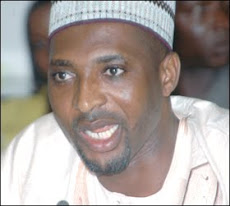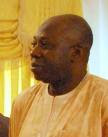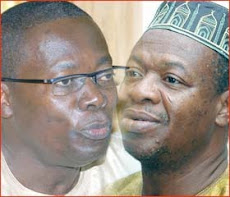
There is a case that has been going on in Asker and Baerum High Court in Norway since October 20, 2005 but has hardly made even a whisper in Ghana. Yet, as you will shortly see, it is very explosive and revealing in its implications and scope. First some disclaimers- The writer obtained an English translation of a Norwegian investigative report titled “Gr?seme- Svartepenger” (Gray Cement-Black Money- published in DN Magasinet 21/22 April 2007). It is written by Geir Imset and Harald Vanvik. The purpose of this article is to share information going
on thousands of miles away from our country that features significant people in Ghana’s young political history. I leave you, the reader, to draw your own conclusions. The case is brought against one Tor Egil Kjelsaas by his employer for theft. He was stationed in Africa representing a Norwegian cement company’s interests. No African is named as a defendant but the details of how a foreign corporation bribes its way at Africa’s highest levels emerges from the court proceedings and unfortunately some very familiar Ghanaian names are highlighted in uncomplimentary ways as principal players. Here we go. Let us start with the familiar – we know GHACEM, the cement company with plants in Tema and Takoradi that for many years was the sole manufacturer of cement in Ghana. GHACEM is owned by SCANCEM that until 1999 was owned by Norwegian investors. Take another look at the article’s title and the choice of colors gives away the theme. Obviously cement is gray in color but what money is black? Since the 1960s, Scancem has controlled cement production in Ghana, Liberia, Togo, Tanzania, Congo, Sierra Leone, Niger and Gabon often as a monopoly. As we herald the discovery of oil as ushering in “black gold”, Scancem has been harvesting money from black Africa for the sale of cement as the continent builds up after independence. Something else connotes “black money”- bribery to African leaders to protect Scancem ( in the case of Ghana, GHACEM’s) monopoly status- forget the result that the countries end up paying non-competitively high prices for bags of cement and inflation ravages their economies. You have waited enough and so here is the juice. I quote a few paragraphs from the investigative report – Gray Cement- Black Money. The document is extensive and discusses bribery at the highest levels in Ghana, Togo and Nigeria. Togo’s former President Gnassigbé Eyadema is dead and so cannot defend himself. Perhaps Ghana’s former President John J. Rawlings, his wife and his one time “second in-command” (referred to variously in the article as Vice President/Premier/Presidential Adviser), Mr. Paul Victor (PV) Obeng, can shed light on this issue beyond the usual repudiation of the entire story. As for Nigeria, we do not have enough paper so we shall concentrate on our dear Ghana since we all paid some of this alleged bribe in the form of high cement prices. When this in turn caused the runaway inflation in Ghana in the 1990s, we were all made poorer. From the court proceedings we read: “Scancem’s accounts contain vouchers that tell their own story. In the mid 1990s, there were two anonymous bank accounts in Unibank SA in Luxembourg and Barclays Bank SA in Geneva, Switzerland that were earmarked for Ghana. Considerable sums were paid in dollars from Scancem’s headquarters in Oslo. From 1993 to 1998 a total of US 1,690,000 dollars was transferred to the account in Barclays Bank. A total of US 2,460,000 dollars was paid into the Unibank account during the same period. Who received them? Scancem’s management at the time believed the Barclays money, as intended went to President John Jerry Rawlings’ wife, Nana Rawlings, and that the Unibank money went to “Vice President” Paul Victor Obeng” But how did such large sums allegedly go to Mrs Rawlings and PV without them being named as co-conspirators with Tor Egil Kjelsaas in the court case? Perhaps Scancem’s man based in Accra, who certainly would be a courier for these payments can help us and during his testimony Tor Nygarrd said: “It is clear that bribery was behind it all. We paid politicians, the party and the port authorities. Because the payments were of a sensitive nature for the recipients, a special coded form was developed in Ghana for who had received the money. The form was entitled “Special Payments.” Each recipient had his own number code. The form operates with a total of 14 such codes. The individual payments for each individual recipient are specified with the date and amount in Ghanaian cedi and American dollars” Another official based in Ghana, Gerhard Heilberg added in testimony: “Rawlings and his spouse were among those who received considerable payments from Scancem”. And yet another official, Per G. Jacobsen, Scancem’s former finance chief said of the bribery in Ghana and Africa: “Cash was a practical way of doing it.” Believe it or not, Tor Egil Kjelsaas was found not guilty in a ruling on September 6, 2006. The court commented on the problems of evidence as follows: “It is part of the nature of the culture of bribery that it will not be possible to trace this, either by the tax authorities or by those for whom those receiving the money are acting or working. As such it is impossible to provide proof by the party handing over the money in cash that the money actually has been handed over.” Did anyone try to contact any of the people alleged to have received the considerable payments by Scancem in Ghana to remove any unjustified cloud? Yes. Let us listen in on some exchanges with PV Obeng as reported in “Gray Cement Black Money” In 1998 then Managing Director of Scancem, Cato Holmsen in his own inquiry talked to PV on the phone and “Obeng confirmed that the money had been paid as agreed” On March 23, 2007, the authors of the document tried to interview PV in Ghana and he clung to his mobile phone and told them “This is not an interview- I have answered the questions in writing!” In the non-interview, PV was asked what he did for the millions he received from Scancem in the 1990s. He responded: “ I supplied them with information on the prevailing framework conditions at any given time for running a business, and updated them on political changes relating to the government” With specific reference to the court case in Norway regarding allegation of corruption and bribery, Mr, Obeng said: “I am aware of this court case, but because this is an ongoing case, I must therefore decline to comment. I hope you understand my position. There you have it. Did they or didn’t they? You be the judge. The new owner of Scancem, the Heidelberg Group of Germany, has appealed the Norwegian court decision. Fasten your seat belts for who knows what else may drop on my desk? This is what happens in a global technologically driven village- no secret is safe and we thank God for our poor country’s sake. | |||||||














No comments:
Post a Comment